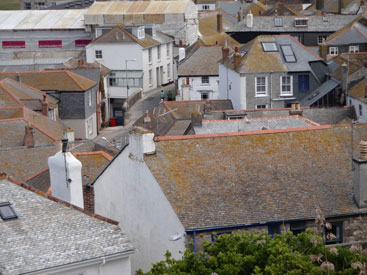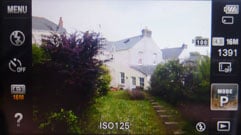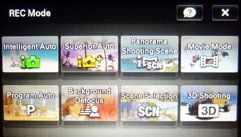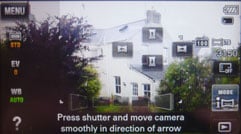Sony Cyber-shot DSC-TX10
-
-
Written by Gordon Laing
Intro
The Sony Cyber-shot TX10, announced in January 2011, is a 16.2 Megapixel compact with a 4x stabilised zoom and a 3 inch LCD wide touch-sensitive screen. Like other TX-series models the TX10 is, in Sony’s words, ‘sleek and stylish’, with a non-extending lens protected by a slide-down panel when not in use. A well as sleekness, the other defining characteristic of the TX10 is ruggedness: it’s water proof and dust proof to a depth of 5 metres, shockproof against a drop of up to 1.5 Metres and freeze proof down to -10C.
The Cyber-shot TX10 has all of the features you’d expect to find in a mid-range compact including fully auto exposure modes with scene detection and Face AF as well as trademark Sony features like sweep panorama and multi-angle 3D modes. The stacking composite low-light modes for which Sony’s Exmor R back -illuminated sensor is well known are complemented in this model by a new HDR mode. As well as all that it’s a capable video camera with full HD 1080i and 25fps 1080p video recording.
We’ve compared it alongside two similarly priced touch-screen compacts, the Canon IXUS 310 HS / ELPH 500 HS and the Panasonic Lumix FX77/78. Can the TX10 deliver all you’d expect from a ‘conventional’ compact, or does its ruggedness come at the cost of compromises elsewhere? Read our full review to find out.
 |
Sony Cyber-shot TX10 Design and controls
 |
|
At only 18mm wide, the Cyber-shot TX10 is compact by any standards. If you’re serious about water-based activities it’ll slip inside your wetsuit and you’ll hardly know it’s there, but I suspect for most people its ability to work in the wet will be a secondary consideration, in which case it’ll fit equally comfortably in your shirt or jeans pocket.
The slide down front panel serves as an on/off switch, exposing the lens and powering up the camera at the same time. Likewise, you just need to slide the cover back up to turn everything off. There’s also an on/off button on the top panel which gives you on-screen access to the menus, other settings and playback, but obviously, you still need to slide the cover down to shoot.
The only other physical controls on the camera are the lozenge-shaped shutter release, a corner-mounted zoom rocker and, on the bevelled rear edge of the top panel, a playback and a dedicated movie record button.
The rear of the camera is entirely given over to the LCD screen. It’s clear plastic from top to bottom and left to right, but the actual screen area, even in 16:9 movie mode, doesn’t reach all the way to the edges and there’s ample space on the right for your thumb to grip without activating any of the screen icons. When shooting in the 4:3 aspect ratio, touch-icons are arranged in the black vertical strips either side of the image.
 |
For touch-control the TX10 screen is light and responsive, but in general use I found that in bright outdoor conditions, even when it wasn’t sunny, the TX10 screen was quite hard to see. For an ordinary compact this would be a minor irritation, but for a touch-screen camera it can make the simplest things, like switching exposure mode, or using touch-focus, more demanding than they should be.
To protect it from moisture and dust, the Cyber-shot TX10 has more rugged doors and covers on ports than usual. In place of the usual flimsy plastic flap, a hinged rubber-sealed door on the right side opens via a catch to reveal an A/V / USB port and a mini-HDMI port. On the base of the camera a similarly constructed door covers the combined battery and card compartment. Like all recent Sony compacts the TX10 takes SD/HC/XC as well as Sony’s Memory Stick Duo and Pro Duo cards.
Sony Cyber-shot TX10 lens and stabilisation
The Cyber-shot TX10’s 4x optical zoom has a very useful 25mm wide angle extending to 100mm at the telephoto end of the range. Compact manufacturers are increasingly opting for super-wide-angles, a trend I’m happy to see. Both the Canon IXUS 310 HS / ELPH 500 HS and Panasonic Lumix FX77/ FX78 start at a similar focal length, though the Canon lens has a significant light-gathering advantage over the TX10 when zoomed-out: f2.0 vs f3.5, which lets the Canon gather almost four times as much light, thereby allowing faster shutter speeds or lower ISOs under the same conditions.
Sony Cyber-shot TX10 coverage wide |
Sony Cyber-shot TX10 coverage tele | |
 |  | |
| 4.43-17.7mm at 4.43mm (25mm equivalent) | 4.43-17.7mm at 17.7mm (100mm equivalent) |
The Cyber-shot TX10 has Optical SteadyShot lens-shift image stabilisation which unlike the IXUS 310 HS / ELPH 500 HS and Lumix FX77 / 78 is not configurable, it’s always on and can’t be disabled.
In the conditions in which the shots below were taken we were able to get a steady hand-held shot at 125 ISO with a shutter speed of 1/15, so the Optical SteadyShot image stabilisation is effective. As you can’t turn it off, I’m not able to show the usual comparison, instead the below crops are from shots taken using, on the left Anti motion Blur and on the right Handheld Twilight scene modes.
Sony Cyber-shot TX10 low-light:Anti Motion Blur / Handheld Twilight | ||||
 |  | |||
100% crop, 4.43-17.7mm at 17.7mm, 1/250, 2500 ISO, Anti Motion Blure scene mode. |
100% crop, 4.43-17.7mm at 17.7mm, 1/100, 800 ISO, Anti Motion Blure scene mode. | |||
Sony Cyber-shot TX10 shooting modes
 |
|
The Cyber-shot TX10 has Intelligent Auto exposure mode with scene detection.
Nothing special there you might think, but the TX10 takes it further with an Advanced mode that takes two shots with different settings so you can choose the best one. For example in Twilight mode the first shot is made with the flash in slow synchro mode and a subsequent one with increased ISO sensitivity. Scene detection also recognises subject movement and when the camera is mounted on a tripod.
The TX10 has a second Auto mode called Superior Auto. This takes a burst of images and produces a composite. It’s particularly effective for backlit scenes where the TX10 is effectively producing an in-camera HDR composite.
Program auto mode provides control over ISO sensitivity, white balance, metering and focus modes, but, unlike the IXUS 310 HS / ELPH 500 HS, there are no semi-automatic exposure modes. The scene mode menu includes the usual suspects – Pet, Beach and, of course Underwater plus several options including Anti motion blur, Hand-held Twilight, and Backlight Correction HDR that produce a composite image form a burst sequence.
The TX10 includes the pan-and-shoot iSweep panorama feature for which Cyber-shot compacts are well-known adding an underwater variant As you can see from the example on the right you can pan vertically as well as horizontally. If you own a 3D TV you’ll be particularly interested in the Cyber-shot TX10’s new 3D shooting modes, 3D still Image and 3D sweep panorama. But if you’ve yet to be convinced of the benefits of 3D TV you can still enjoy 3D panoramic shots with Sweep Multi Angle 3D, a faux 3D effect that can be viewed on the Cyber-shot TX10’s LCD screen by tilting it.
Sony Cyber-shot TX10 movie modes
The Cyber-shot TX10 provides a wealth of movie modes: starting at the top is FX mode, 1080i HD encoded like the other HD formats in AVCHD format at around 24Mbps. If you value the ability to squeeze more footage on a card FH mode reduces the bitrate to 17Mbps and there’s a third HQ mode at 1440 x 1080 and 9Mbps. All these HD modes are encoded as AVCHD files and all are interlaced at 50 or 60fps depending on region. If you choose MP4 encoding you get three options 1440 x 1080p, 720p and VGA at 25 or 30fps depending on region. The maximum recording time in any format is 29 minutes which, at the best quality AVCHD setting will occupy around 6GB.
Not only can you use the Cyber-shot TX10’s virtually silent optical zoom during movie recording, you can also take still pictures with a 16:9 aspect ratio at a size of 2304 x 1296. The stereo mics produce good quality sound and there’s a wind noise filter buried away in the Shooting settings menu. Sony recommends you use class 4 speed or faster SD cards for movie recording. A dedicated movie shooting button is a plus, but there’s a long, long delay – nearly 4 seconds – between pressing the button and recording beginning which is simply unacceptable. You wouldn’t expect to wait that length of time for the shutter to fire when taking stills and it should be no different for video.
| |
|---|---|
|
Used in FX mode for all these sample clips, the Cyber-shot TX10 produces excellent quality 1080i video. Viewed on a conputer the interlacing is clearly visible on pans and zooms, but you can’t hear anything of the very quiet zoom motor.
| |
|---|---|
|
Nice exposure and rock solid focus on this tripod mounted panning shot, slighly marred by those interlacing artifacts again. The stereo mics are picking up a little bit of wind noise, but there’s a filter you can use to reduce that.
| |
|---|---|
|
For this interior hand-held panning shot the Cyber-shot TX10 does a good job with the focus and exposure and those stereo mics pick up the ambient sound very clearly. What a shame it takes an age for the camera to start recording when you press the button.
Sony Cyber-shot TX10 handling
Because of its non-extending lens, the Cyber-shot TX10 is quick to start up, but only marginally faster than extending lens compacts like the IXUS 310 HS / ELPH 500 HS and the Lumix FX77 / FX78. The corner-mounted zoom and slim profile shutter release on T-series cyber-shots are things I’ve never felt comfortable with, but you may feel differently and, as always, I’d recommend you get your hands on one to try before purchasing.
 |
 |
 |
The TX10’s face detection works well, adjustable sensitivity on the smile shutter and adult and child priority options on face detection greatly improve the chances of making it work in just the way you want. The Cyber-shot TX10 boasts impressive burst shooting capabilities with a 10fps mode that shoots 10 frames in exactly one second plus a more pedestrian 2fps mode, although once again beware as it takes a while to record a burst to the card and free-up the camera for subsequent shooting.
The menu system works well with the touch-screen and is easily navigable; the first screen providing frequently used settings with shooting settings, formatting etc on a second level menu. Like the IXUS 310 HS / ELPH 500 HS, the Cyber-shot TX10 menus are configurable, so you can add personal favourites to the vertical strips on the main display.
In the water the TX10 produces great results, but current touch-screen technology just isn’t suited to use in the wet. The Cyber-shot TX10’s touch-screen is inoperable in the water. Even when you get out of the water you need to give the screen a wipe and dry your hands before you can use it. This is a bit of a let down because it means you can’t change modes, to use the underwater panorama scene mode for instance, or to switch from underwater to a non-aqua mode while you’re still in the water but not under it. You have to select your mode while dry, then get on with it, which pretty much confirms our initial opinion of the TX10 as primarily a land camera that’s good for occasional use in the water.
The Cyber-shot TX10’s 16.2 Megapixel Exmor R back-illuminated CMOS sensor produces images with a maximum size of 4608 x 3456 pixels that are JPEG compressed to around 4MB.
To see how the quality of the Cyber-shot TX10 measures-up in practice, take a look at our real-life resolution and high ISO noise results pages, browse the sample images gallery, or skip to the chase and head straight for our verdict.





